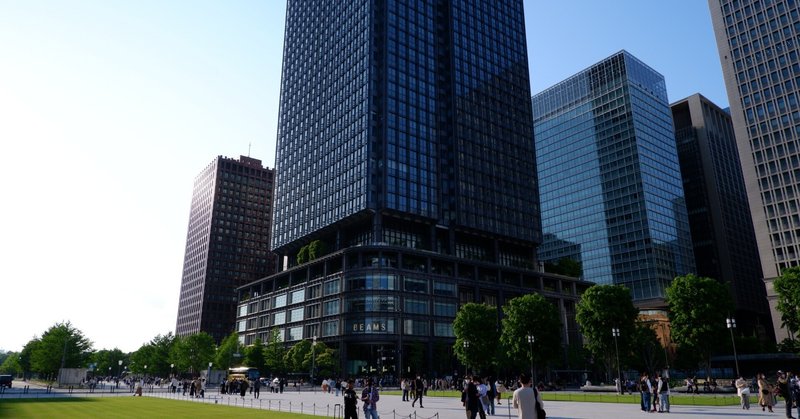
【シンガポールに行こう】#11 日本はいつHigh Income Countryになったのか?
前回の記事で、授業内でちょっと面白いな、と思ったことを書き留めた。ああいう「授業中におっと思ったこと」というのは、大事に取っておかないといつの間にか手の間からすり抜けてどこかに消えていってしまう。だから、今回もその続き。
はじめに:日本は何がどうなってMiddle income countryを脱したのか?
最初の3日9時間の授業の中で散々語られる日本のイメージは、「日本と韓国は発展に成功した国である」ということであった。シンガポール・香港・台湾がその後を追随し、ASEAN諸国が中所得国になろうともがいている、というような。それでは、果たしてどこまで「日本は成功した国」なのかと思って、ちょっとだけ調べた。文章に起こしておかないと忘れる貧弱な頭を有しているので、以下にまとめてみようと思う。
文章中ADBはAsia Development Bankの略です。
(1) Asian Development Bankのワーキング・ペーパーから
'Japan’s postwar economic development can be divided into five different stages: a postwar reconstruction phase (1945–1954), a fast-growth phase (1955–1972), the oil shock phase (1973–1984), the bubble economy phase (1985–1990), the lost decade (1990–2000), and a revitalization phase (2004–present) (see Ifo Institute for Economic Research and Sakura Institute of Research 1997; Inkster 2001; Syed, Kang, and Tokuoka 2009; Yoshino and Taghizadeh-Hesary 2015).'
戦後の復興期、高度経済成長期、オイルショック、バブル、失われた2000年を経て、現在はリカバリ期にあるのか。多分この辺は高校の経済でやった…な。
’In Japan (see Figure 5), we observe a more or less stable decrease in the per capita growth rates over the whole sample period. Higher per capita growth rates corresponded to fast increases in capital intensity until the oil crisis in 1973. Afterwards, the capital–employment ratio decreased, although we observe a short-lived boom during the second half of the 1980s. The inverse of the employment rate rose until the oil crisis and then seems to have followed the Japanese business cycle. Figure A1 in the Appendix shows the separate time series for capital and employment for the three countries.'
とは言いつつ、成長率は低迷しつつある。
この報告書の要点は、韓国と日本はすでに経済の構造的変化を経験した上でHigh Income Econoyに移行しており、特に日本の経済はアジア通貨危機及び2008年の金融危機を経験する中不安定さと不透明さを増しているが、中国がMiddle Income Countryを抜け出したいと思うなら、韓国・日本のような構造変化を経験する必要がある、というものである。これはADBが出した報告書であることも加わって、教授が言っていたことに反さない(教授がADB出身の人なのだから当たり前だろう)。日本の経済指標は減少傾向にあるが、構造が変化しているためある程度維持できるわけだ(多分)。
(2) アカデミアから
次に、東京大学のOkazaki先生という方の論文を読んでみよう(この論文を選んだ理由はそこそこ新しいこと、テーマに合致した本の中で発表されたチャプターであること、信頼できる機関から発行されていることなどから)。
開発に関する概論
同じ授業を取っている人じゃないとわからない話をするが、この方のチャプターは授業でカバーした内容も触れていて、彼の言っていることが出鱈目でないことを裏付けている(出鱈目である可能性は大いに少ないと信じたいが、経済は未知の分野なので、文献的な記述を見つけられるとやはり安心する)。
①Middle Income Trap
Middle income trapに関する記述: 一度中所得国になってしまうと、そこから抜け出すのが困難になる現象。開発途上国の発展のためには、これを抜け出すことが必要。
“middle-income countries have grown less rapidly than either rich or poor countries, and this accounts for the lack of convergence in the twentieth century”
②鉄鋼業の重要性
韓国POSCOに関する議論の中で触れたような気がするが、とある国が手っ取り早く成長するには「鉄鋼業」の発展が重要である。そのために、日本の場合だと1949年から鉄鋼業の合理化・効率化が図られた、と言うことだ。
これはうまい具合に、セオリーとして習ったことを裏づけする例となった。
Government economy policy can be characterised to ‘direct government control (the late 1940s), extensive government intervention through foreign exchange allocation (the 1950s), and deregulation (the 1960s and 1970s)’ .
③中所得国を脱するために必要なもの
鉄鋼業に加えて、産業の抜本的改革(構造変化)が必要であることはこの記事でも合意されている。
“a condition in which the society continues to modify or create new institutions as problems evolve (North 2005, 169).
At the same, the Report stressed that the growth after that would be achieved only through “modernization”. Here “modernization” covered not only technologies, but also economic and social structure.
日本に関する議論
それを踏まえて、日本についてこの人の言っていることを追ってみよう。
日本の高所得国化は1970年周辺であるようだが、日本の経済構造の変化は1870年、明治維新のあたりだ。今年の夏長崎・産業革命に関する遺産群を大量に見てきたので、その辺はなんとなく感覚的にわかる。

As we will see in the next section, Japan transited from a middle income country to a high income country in the period from the 1950s to the 1970s. In this period, the comparative advantage of the Japanese economy changed substantially, and the Japanese economy experienced a large structural change. This chapter discusses.
なるほど、直接のコントロール→介入→自由化 と流れを追ってきたわけだ。これは戦後の回復期・成長期・オイルショックの影響期と概ね合致するわけだ。かつ、日本は経済の種類の変化に加えて、経済の内容の変化を経験したらしい。第一次産業から二次・三次産業へ(種類)、また繊維や炭鉱業の人員を大幅に減らし、機械産業への移行を促した(内容)。
かつ、そのために、以下のような政策が採られた。
①政府手動の経済制度から自由経済制度へ(ドッジ・プランの採用)
②外貨の割り振り制度及び私企業による資金の提供
③鉄鋼業及び石炭業の合理化
④機械業の発展
⑤貿易の自由化及び拡大
③は先ほどの鉄鋼業の重要性、また④については、Blue Ocean Strategyと言われる「イノベーションを起こすことで、周辺諸国と自国産業の差別化を図り、市場の独占と需要の生産を図る」みたいな戦略の先駆けとなっているのかな、などと思ったのだった。
終わりに
今まで「日本について知りたいです!」とか言っておきながら、論文をちゃんと読んでこなかったことを反省しながら一年が過ぎた。英国の大学で学んだこと、それは「知りたい分野についてはひたすら読め」である。経済分野に分類されるものなどは知識も薄いので、やっぱりカバーしていきたいな、と思ったのだった。60ページくらい読んだだけでカチカチカチッと学びになる部分が大きかった。
参考文献一覧
Murach, M., Wagner, H., Kim, J., and Park, D. (2020). ‘Trajectories to High Income Growth Dynamics in Japan, The People’s Republic of China, and the Republic of Korea’., ADB Economics Working Paper, 622. Available at: https://www.adb.org/sites/default/files/publication/644556/ewp-622-trajectories-high-income-jpn-prc-rok.pdf (Accessed on 22 June 2022).
Okazaki, T. (2019).’ Development State Evolving: Japan’s Graduation from a Middle Income Country’., In: Takagi, Y., Kanchoochat, V., Sonobe, T. (eds.) Developmental State Building. Emerging-Economy State and International Policy Studies. Springer: Singapore. Available at: https://doi.org/10.1007/978-981-13-2904-3_2 (Accessed on: 22 June 2022).
この記事が気に入ったらサポートをしてみませんか?
